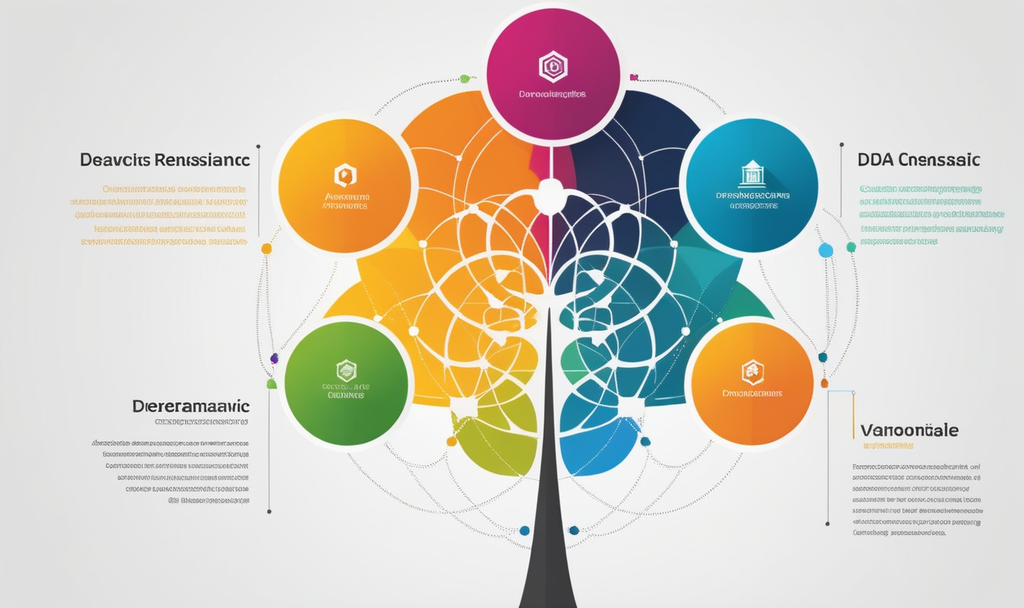Introduction:
In the ever-evolving landscape of blockchain technology and decentralized systems, the concept of Decentralized Autonomous Organization (DAO) have emerged as a revolutionary paradigm. This blog seeks to delve into the intricacies of the DAO model, unraveling its essence and exploring the potential it holds for reshaping traditional organizational structures.
Understanding Decentralized Autonomous Organizations:
At its core, a DAO is an autonomous entity represented by smart contracts and governed by its members, who collectively make decisions through consensus mechanisms. The key feature that distinguishes DAOs from traditional organizations is their decentralized nature, where decision-making power is distributed among participants rather than concentrated in a central authority.
DAOs operate on blockchain networks, leveraging the transparency, security, and immutability inherent in this technology. Smart contracts, self-executing pieces of code, facilitate the execution of predefined rules and agreements without the need for intermediaries.
The Mechanism Behind DAOs:
To comprehend the functioning of DAOs, it is essential to grasp the mechanics underpinning these decentralized entities. Typically, DAOs utilize blockchain platforms such as Ethereum, Binance Smart Chain, or Polkadot to create smart contracts that encode the organization’s rules and protocols.
Members of a DAO hold governance tokens, which grant them the right to propose and vote on decisions. The voting process is typically proportional to the number of tokens held by each member, aligning decision-making power with the level of commitment to the organization.
The Immutable Ledger:
One of the fundamental advantages of DAOs lies in the utilization of blockchain’s immutable ledger. Every decision, transaction, or proposal is recorded on the blockchain, fostering transparency and accountability. This not only mitigates the risk of fraud but also ensures that historical data remains tamper-proof, instilling trust among participants.
Challenges and Risks in DAOs:
While the potential of DAOs is vast, it is crucial to acknowledge the challenges and risks associated with this model. Security vulnerabilities, code exploits, and governance issues are among the primary concerns. The infamous DAO hack of 2016 serves as a stark reminder of the vulnerabilities inherent in smart contracts and the need for robust security measures.
Legal ambiguities also pose a challenge to DAOs. The lack of a centralized authority raises questions about liability, jurisdiction, and regulatory compliance. As the legal landscape surrounding blockchain and cryptocurrencies evolves, addressing these concerns becomes imperative for the widespread adoption of DAO models.
Evolution of DAOs in Various Sectors:
Despite the challenges, DAOs have witnessed a burgeoning presence across diverse sectors. Decentralized finance (DeFi) projects, gaming communities, and even art platforms have embraced the DAO model. These entities leverage decentralized governance to empower community members, fostering a sense of ownership and inclusivity.
In the realm of DeFi, DAOs play a pivotal role in decision-making processes related to protocol upgrades, token distributions, and governance parameter adjustments. This decentralized approach aligns with the ethos of the blockchain community, where user participation is paramount.
DAOs in the Art World:
The art world, traditionally dominated by intermediaries, has experienced a paradigm shift with the introduction of DAOs. Platforms like Async Art and Art DAO enable artists and collectors to collaborate in a decentralized manner. DAOs in the art sector empower creators by allowing them to retain more control over their work and directly engage with their audience.
Governance Tokens: The Heartbeat of DAOs:
The issuance and distribution of governance tokens are central to the functioning of DAOs. These tokens not only represent ownership but also confer voting rights and influence over the direction of the organization. The distribution of governance tokens often occurs through initial token offerings (ITOs) or liquidity mining programs, ensuring a diverse and engaged community of stakeholders.
The DAO Renaissance:
The concept of DAOs is not new; however, recent years have witnessed a renaissance, with an increasing number of projects adopting this organizational model. Improved smart contract standards, advances in blockchain scalability, and a growing understanding of decentralized governance contribute to this resurgence.
The Passive Voice in DAO Discussions:
While active voice is preferred in blogs for clarity, passive voice can emphasize certain points. For instance, instead of stating, “Members vote on proposals,” one could say, “Proposals are voted on by members.” This passive construction subtly shifts the focus to the action itself.
Transitioning Through DAO Topics:
Transition words serve as bridges, guiding readers through the various aspects of DAOs. However, their excessive use can disrupt the flow of the narrative. Striking a balance is crucial to maintaining coherence and readability. Sentences such as “in addition,” “moreover,” and “however” can be used sparingly to indicate conceptual changes.
If you have any question about this article, please contact us …
You can easily create a free cryptocurrency wallet with binance …
Conclusion:
In conclusion, the Decentralized Autonomous Organization model stands at the forefront of the blockchain revolution, challenging traditional organizational structures and fostering a new era of decentralization. Despite challenges and risks, Decentralized Autonomous Organization have proven to be versatile and applicable across a spectrum of industries.
As the DAO renaissance progresses, stakeholders, developers, and regulators must address complexities collaboratively. Immutable ledgers, governance tokens, and decentralized decision-making shape DAOs, heralding a future of autonomy, transparency, and inclusivity. Embracing DAO potential mandates collective efforts to navigate challenges, refine mechanisms, and unlock the full spectrum of possibilities inherent in decentralized autonomous organization models.

